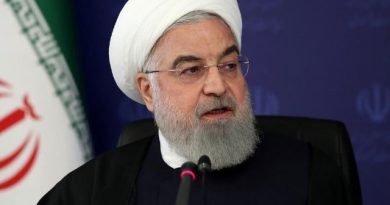Germany Expands Defense Capabilities with Additional F-35 Jet Order
Berlin — Germany is preparing to place an order for an additional 15 F-35 fighter jets from U.S. defense manufacturer Lockheed Martin, marking a significant step in the country’s efforts to modernize its air force and strengthen its defense capabilities amid evolving global security challenges.
Berlin’s plan to acquire 15 more U.S.-made F-35 fighter jets strengthens NATO readiness and reflects renewed commitment to European security cooperation.
According to a parliamentary source, Defence Minister Boris Pistorius has signaled his intention to move forward with the new purchase, estimated to cost around €2.5 billion ($2.9 billion). The confidential proposal is expected to be reviewed by Germany’s parliamentary budget committee in the coming weeks.
Germany has already ordered 35 F-35 Lightning II jets as part of its earlier decision to replace its fleet of 85 ageing Tornado aircraft, which have been in service since the 1980s.
The Tornado fleet, used primarily for reconnaissance and tactical strike missions, is scheduled for gradual decommissioning over the next decade.
The F-35s will assume one of the Tornado’s most critical roles — carrying U.S. nuclear weapons stored in Germany under NATO’s nuclear-sharing arrangements.
This makes the acquisition a key component of Berlin’s defense modernization strategy and its ongoing commitment to NATO’s collective security obligations.
Expanding Defense Readiness
The move comes as Germany continues to reshape its defense posture following the Russian invasion of Ukraine and rising geopolitical tensions. In 2022, Chancellor Olaf Scholz pledged a €100 billion special defense fund to upgrade Germany’s military infrastructure, equipment, and capabilities — the country’s largest such investment since World War II.
With the expanded order, Germany’s total F-35 fleet will increase to 50 aircraft, positioning the nation among the leading European operators of the advanced stealth fighter.
The F-35, known for its cutting-edge radar evasion technology, advanced sensors, and interoperability within NATO, is expected to become a cornerstone of allied air defense in the coming decades.
“Germany’s additional F-35 order reflects not only a modernization of its air force but also a reaffirmation of its strategic partnership with the United States and its NATO allies,” said a defense analyst in Berlin. “It sends a clear signal of deterrence and readiness.”
Shift in Policy and Regional Implications
Berlin had previously denied plans to purchase more than 35 F-35s as recently as July. However, the improved fiscal position of the defense budget and ongoing discussions about European security priorities appear to have influenced the government’s decision.
The acquisition is also expected to enhance Germany’s defense industry collaborations. However, it could potentially reignite tensions with France over the Future Combat Air System (FCAS) — a joint Franco-German-Spanish project aimed at developing a next-generation European fighter jet.
While the FCAS program has faced repeated delays and technical disagreements, some defense experts argue that the F-35 expansion should not be seen as competition but as a short- to mid-term measure to address immediate defense needs while the FCAS project matures.
“Berlin’s decision to invest in proven, ready-to-deploy F-35s ensures operational security for the next decade while Europe continues to develop its indigenous capabilities,” a European defense official commented.
Strengthening Transatlantic Ties
The F-35 program also deepens transatlantic defense cooperation, with several NATO countries — including Italy, the UK, the Netherlands, Poland, and Finland — already operating or ordering the aircraft. This growing fleet enhances interoperability among allied forces, allowing joint missions and shared maintenance systems.
Lockheed Martin has welcomed Germany’s growing commitment to the F-35 program, emphasizing the aircraft’s role in maintaining air superiority and collective defense readiness.
Once finalized, the new order will underscore Germany’s transformation into a more proactive defense partner within NATO, moving away from its historically restrained military stance.
The additional F-35s are expected to be delivered by the early 2030s, with the first batch of jets from the initial order already in production. Training of German pilots and maintenance crews is underway in the United States.
Defense Minister Pistorius has stated that these measures aim to ensure “operational readiness and strategic flexibility” for the Bundeswehr, Germany’s armed forces, in the face of evolving security threats.
Germany’s expanded F-35 fleet is likely to play a central role in NATO’s future deterrence strategy, reinforcing the alliance’s presence in Europe and ensuring that Germany remains a key contributor to regional and global stability.



